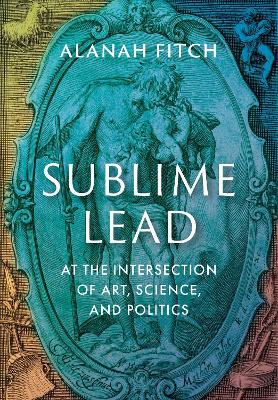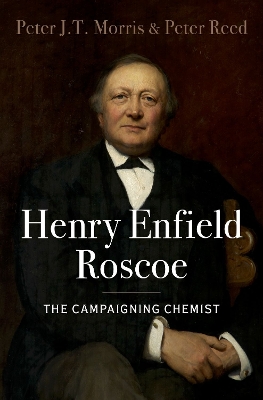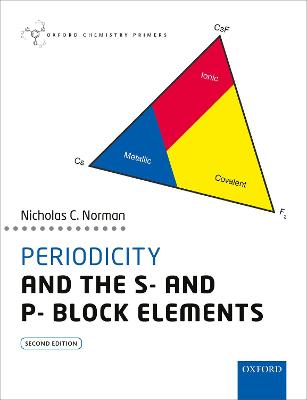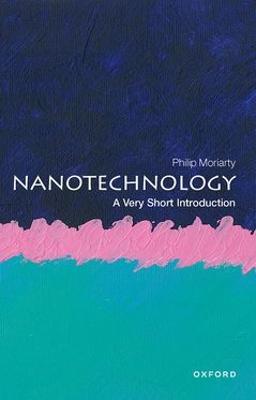Inorganic Chemistry
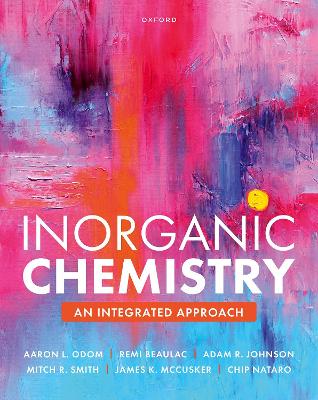 -10%
portes grátis
-10%
portes grátis
Inorganic Chemistry
An Integrated Approach
Smith, Mitch R.; Beaulac, Remi; Odom, Aaron L.; McCusker, James K.; Johnson, Adam R.; Nataro, Chip
Oxford University Press
03/2025
984
Mole
9780198905998
Pré-lançamento - envio 15 a 20 dias após a sua edição
Descrição não disponível.
1: What is inorganic chemistry, and why study it?
2: A brief review of physical chemistry
3: Basics of bonding: the 2-Center 2-Electron (2c2e) Bond
4: The shapes of main group molecules: the VSEPR Mode
5: Symmetry and group theory
6: Group theory and molecular orbital theory
7: Hybridization-based theories of bonding: applications within the main group
8: Main group bonding
9: Applying bonding principles to main group reactivity and properties
10: Introduction to transition metal chemistry
11: Basics of transition metal bonding 1: Simple ligands including olefins, diatomics, phosphines and hydrides
12: Basics of transition metal bonding 2: conjugated p-systems, metal-ligand multiple bonds, and other ligand types
13: Thermodynamic considerations in reactivity: acid-base theory and redox reactions
14: Understanding transition metal complexes using hybridization-based theory
15: The one-electron picture of transition metal electronic structure
16: Optical spectroscopy and excited state electronic structure
17: Kinetics and mechanisms of ligand substitutions
18: Some practical aspects of mechanism elucidation
19: Reactivity in organometallic chemistry
20: Solid-state chemistry
21: Bioinorganic chemistry
22: f-Element chemistry
Appendix A, Polar covalence
Appendix B, Some representative bond distances and bond energies
Appendix C, Tabulated values for determination of bond order: r0 and b
Appendix D, Character tables
Appendix E, Review of matrix manipulations
Appendix F, Expansion of the AOM to include S4 terms
Appendix G, Matrices associated with strong field parameters
Appendix H, Changes in atomic radius with charge and coordination number
Appendix I, Imaginary numbers and complex conjugates
Appendix J, Standard reduction potentials
Appendix K, Valence orbital energies
Appendix L, Shapes of the f-orbitals
Appendix M, Linear Combination of Atomic Orbitals (LCAO) Molecular Orbital Method Review
Appendix N, Pascals Constants and the Diamagnetic Susceptibility
2: A brief review of physical chemistry
3: Basics of bonding: the 2-Center 2-Electron (2c2e) Bond
4: The shapes of main group molecules: the VSEPR Mode
5: Symmetry and group theory
6: Group theory and molecular orbital theory
7: Hybridization-based theories of bonding: applications within the main group
8: Main group bonding
9: Applying bonding principles to main group reactivity and properties
10: Introduction to transition metal chemistry
11: Basics of transition metal bonding 1: Simple ligands including olefins, diatomics, phosphines and hydrides
12: Basics of transition metal bonding 2: conjugated p-systems, metal-ligand multiple bonds, and other ligand types
13: Thermodynamic considerations in reactivity: acid-base theory and redox reactions
14: Understanding transition metal complexes using hybridization-based theory
15: The one-electron picture of transition metal electronic structure
16: Optical spectroscopy and excited state electronic structure
17: Kinetics and mechanisms of ligand substitutions
18: Some practical aspects of mechanism elucidation
19: Reactivity in organometallic chemistry
20: Solid-state chemistry
21: Bioinorganic chemistry
22: f-Element chemistry
Appendix A, Polar covalence
Appendix B, Some representative bond distances and bond energies
Appendix C, Tabulated values for determination of bond order: r0 and b
Appendix D, Character tables
Appendix E, Review of matrix manipulations
Appendix F, Expansion of the AOM to include S4 terms
Appendix G, Matrices associated with strong field parameters
Appendix H, Changes in atomic radius with charge and coordination number
Appendix I, Imaginary numbers and complex conjugates
Appendix J, Standard reduction potentials
Appendix K, Valence orbital energies
Appendix L, Shapes of the f-orbitals
Appendix M, Linear Combination of Atomic Orbitals (LCAO) Molecular Orbital Method Review
Appendix N, Pascals Constants and the Diamagnetic Susceptibility
Este título pertence ao(s) assunto(s) indicados(s). Para ver outros títulos clique no assunto desejado.
1: What is inorganic chemistry, and why study it?
2: A brief review of physical chemistry
3: Basics of bonding: the 2-Center 2-Electron (2c2e) Bond
4: The shapes of main group molecules: the VSEPR Mode
5: Symmetry and group theory
6: Group theory and molecular orbital theory
7: Hybridization-based theories of bonding: applications within the main group
8: Main group bonding
9: Applying bonding principles to main group reactivity and properties
10: Introduction to transition metal chemistry
11: Basics of transition metal bonding 1: Simple ligands including olefins, diatomics, phosphines and hydrides
12: Basics of transition metal bonding 2: conjugated p-systems, metal-ligand multiple bonds, and other ligand types
13: Thermodynamic considerations in reactivity: acid-base theory and redox reactions
14: Understanding transition metal complexes using hybridization-based theory
15: The one-electron picture of transition metal electronic structure
16: Optical spectroscopy and excited state electronic structure
17: Kinetics and mechanisms of ligand substitutions
18: Some practical aspects of mechanism elucidation
19: Reactivity in organometallic chemistry
20: Solid-state chemistry
21: Bioinorganic chemistry
22: f-Element chemistry
Appendix A, Polar covalence
Appendix B, Some representative bond distances and bond energies
Appendix C, Tabulated values for determination of bond order: r0 and b
Appendix D, Character tables
Appendix E, Review of matrix manipulations
Appendix F, Expansion of the AOM to include S4 terms
Appendix G, Matrices associated with strong field parameters
Appendix H, Changes in atomic radius with charge and coordination number
Appendix I, Imaginary numbers and complex conjugates
Appendix J, Standard reduction potentials
Appendix K, Valence orbital energies
Appendix L, Shapes of the f-orbitals
Appendix M, Linear Combination of Atomic Orbitals (LCAO) Molecular Orbital Method Review
Appendix N, Pascals Constants and the Diamagnetic Susceptibility
2: A brief review of physical chemistry
3: Basics of bonding: the 2-Center 2-Electron (2c2e) Bond
4: The shapes of main group molecules: the VSEPR Mode
5: Symmetry and group theory
6: Group theory and molecular orbital theory
7: Hybridization-based theories of bonding: applications within the main group
8: Main group bonding
9: Applying bonding principles to main group reactivity and properties
10: Introduction to transition metal chemistry
11: Basics of transition metal bonding 1: Simple ligands including olefins, diatomics, phosphines and hydrides
12: Basics of transition metal bonding 2: conjugated p-systems, metal-ligand multiple bonds, and other ligand types
13: Thermodynamic considerations in reactivity: acid-base theory and redox reactions
14: Understanding transition metal complexes using hybridization-based theory
15: The one-electron picture of transition metal electronic structure
16: Optical spectroscopy and excited state electronic structure
17: Kinetics and mechanisms of ligand substitutions
18: Some practical aspects of mechanism elucidation
19: Reactivity in organometallic chemistry
20: Solid-state chemistry
21: Bioinorganic chemistry
22: f-Element chemistry
Appendix A, Polar covalence
Appendix B, Some representative bond distances and bond energies
Appendix C, Tabulated values for determination of bond order: r0 and b
Appendix D, Character tables
Appendix E, Review of matrix manipulations
Appendix F, Expansion of the AOM to include S4 terms
Appendix G, Matrices associated with strong field parameters
Appendix H, Changes in atomic radius with charge and coordination number
Appendix I, Imaginary numbers and complex conjugates
Appendix J, Standard reduction potentials
Appendix K, Valence orbital energies
Appendix L, Shapes of the f-orbitals
Appendix M, Linear Combination of Atomic Orbitals (LCAO) Molecular Orbital Method Review
Appendix N, Pascals Constants and the Diamagnetic Susceptibility
Este título pertence ao(s) assunto(s) indicados(s). Para ver outros títulos clique no assunto desejado.


